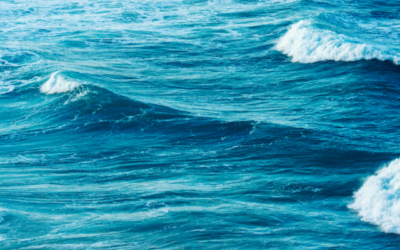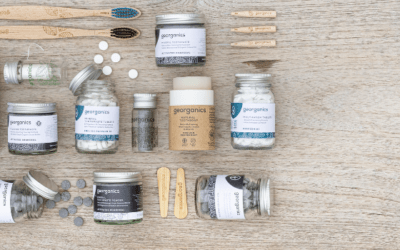How to make a reusable mask
A step-by-step guide
Making a reusable, washable mask or face-covering is a great way to stay safe and reduce waste. According to an analysis by scientists at University College London, if every person in the UK used one single-use mask each day for a year, an extra 66,000 tonnes of contaminated plastic waste would be created!
So, a load more plastic pollution, with ten times more climate change impact than if we #ChooseToReuse and wear reusable masks instead.
Getting started
To make your own mask you’ll need:
- 1 piece of fabric to use for the outside 34cm x16cm (I’ve used a patterned cotton material).
- 1 piece of fabric for the lining, 34cm x16cm (I used a plan pure cotton with a tight weave).
- Elastic or a band for the straps – I used 2 lengths of 20cm elastic.
- Some fabric scissors, pin and matching thread.
- And a sewing machine, if you’re not sewing by hand.
Here’s a template we’ve created for you, print and cut out the paper pattern.
Top tip:
The best materials for homemade face masks: a combination of either cotton and chiffon or cotton and natural silk, both of which appear to effectively filter droplets and aerosols.
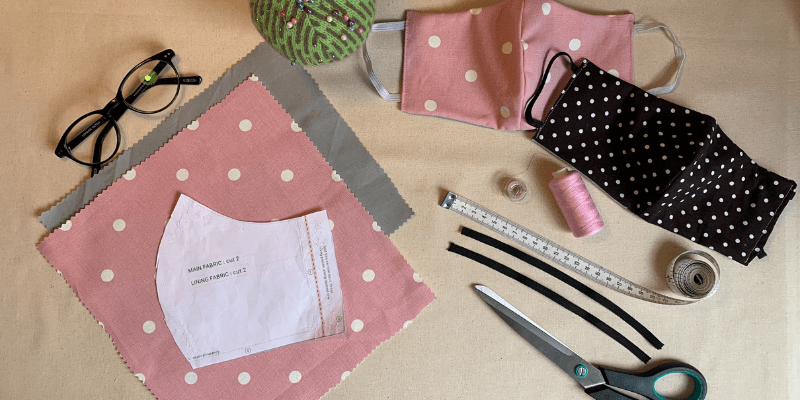
Step 1:
There are 2 ways to cut your fabric out…
You can fold the fabric in half, with the nice side of the fabric facing in. That’s the side that will be the outside once you’re done. Place the paper pattern on top, secure with pins and cut.
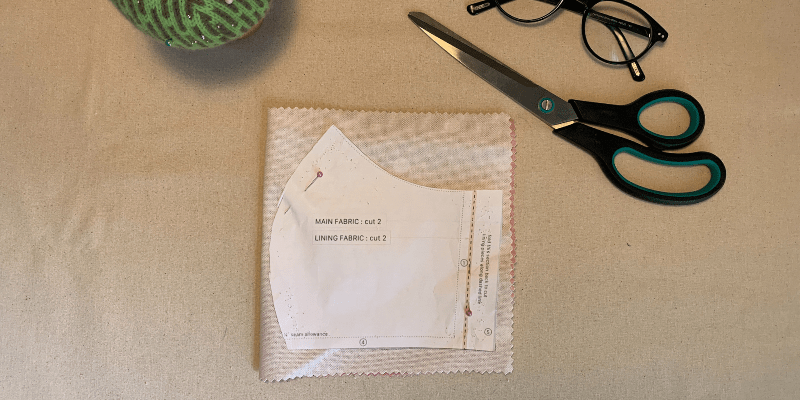
Alternatively, you can cut 2 pattern pieces with the fabric you’ll be using for the outside and 2 more out of the fabric you’ll be using for the lining. Lay the fabric with the nice side facing down, pin your pattern and cut. If you’re cutting it this way, you’ll need to make sure to cut 1 piece then flip your paper pattern to cut the other piece.
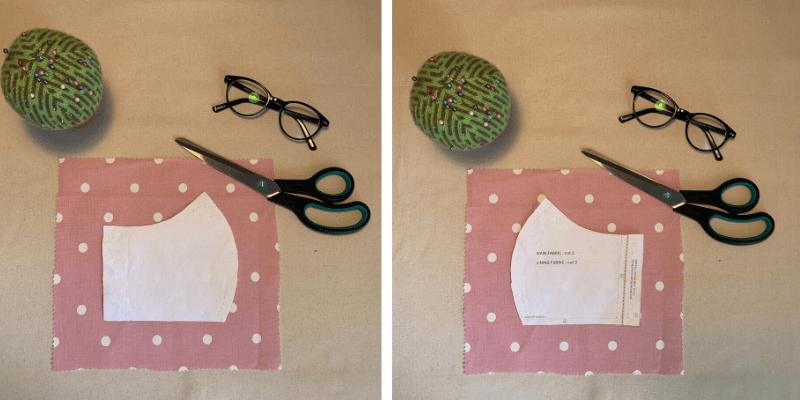
Cut your shapes out as neatly as possible, so that they line up nicely when you start to sew everything together.
Top tip:
This pattern is designed to fit an average-sized adult, to make it bigger add 0.5cm to each edge or smaller, remove 0.5cm from each edge.
Step 2:
Now you’ve cut your fabric, you’ll need to place your fabric together, with the nice side facing in, then sew along the curved edges. Do the same with the fabric you’re using for the lining.

Step 3:
Once you have your two sections of your mask sewn together, place the piece you’re using for the front of your mask facing up (with the seams facing down) then place your lining fabric on top, this time with the seams facing up, so that the two nice sides of the fabrics are facing each other.
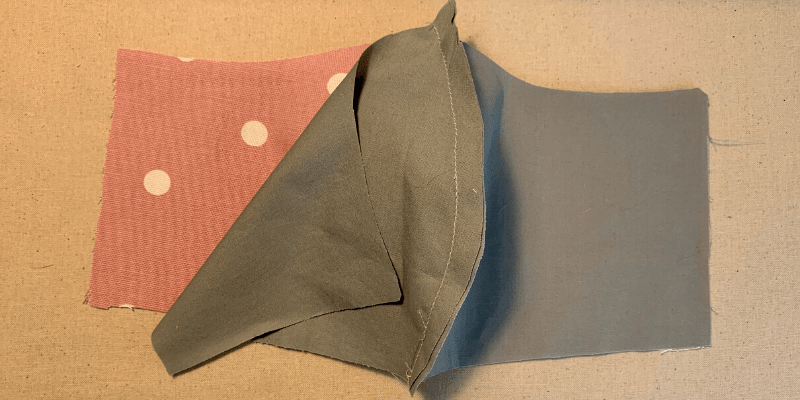
Step 4:
Pin these together and sew along the top and the bottom.
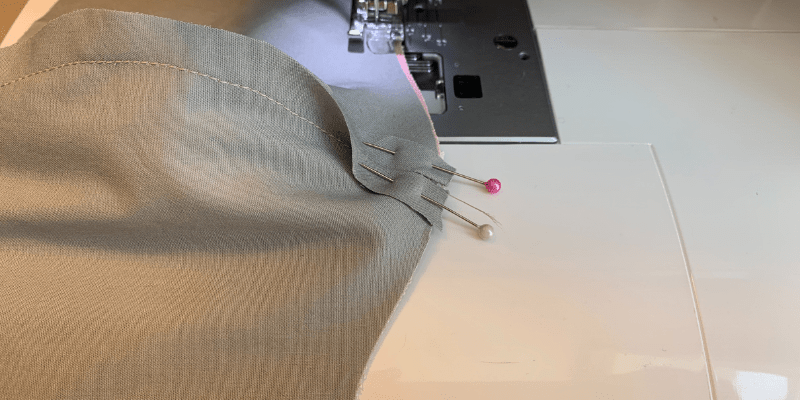
Step 5:
Flip your mask inside out – now you have your mask ready to add some straps. I like to give it an iron at this point to make it nice a neat and easier to work with.
If you’d like you can topstitch the top and bottom, but that’s not necessary if you don’t want to.
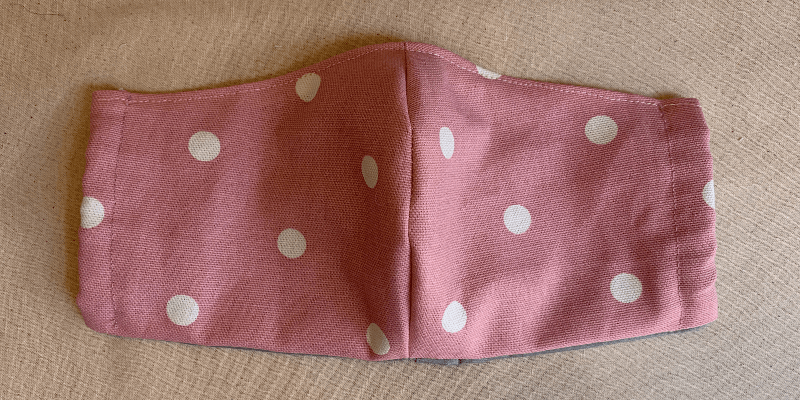
Step 6:
lay your mask with the front side facing down and put the elastic or band on the sides, fold the edge over by 2cm (to the inside of your mask) to create an open space for your strap or band. Then sew, making sure that you’re not sewing over the elastic or band.
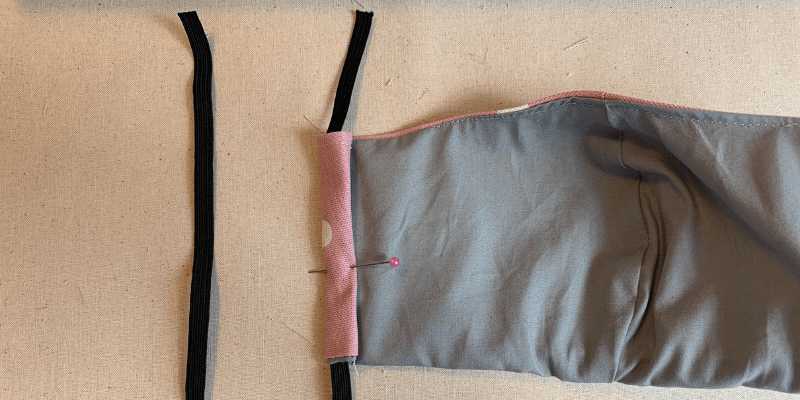
Step 7:
You should now have a mask with two strips of elastic or a band coming out of the top and bottom of your mask. Place your mask on your face, measure where the strap sits comfortably around your ears and tie together.
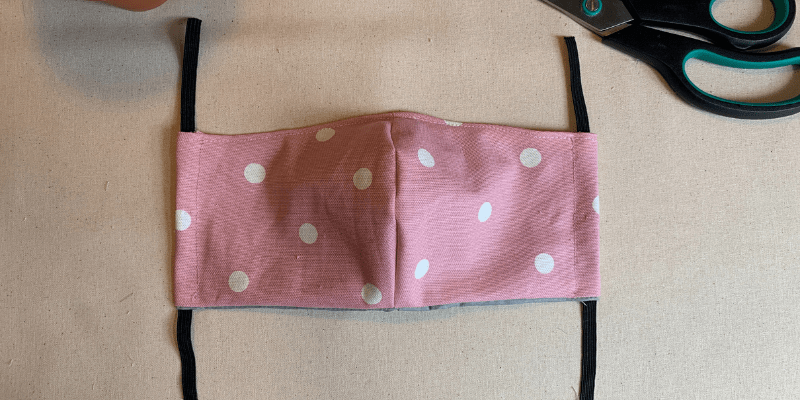
Step 8:
Move the elastic or band so that the tie is hidden inside the chamber you created for your straps.
And there you have it! A homemade and reusable mask.
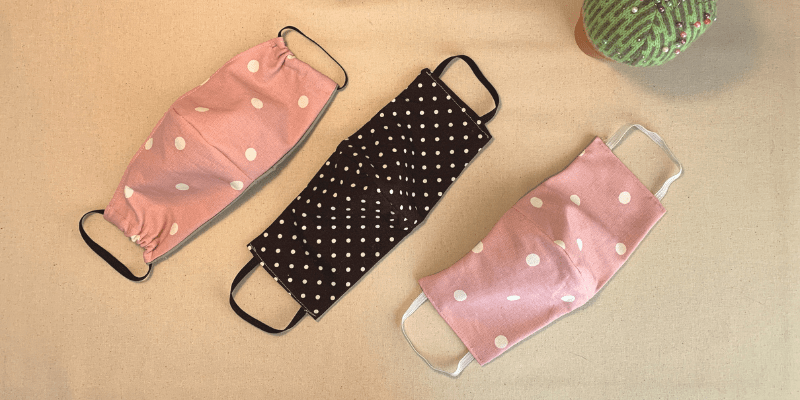
Stay safe
Spread the word
Let’s spread the word and make sure everyone, everywhere knows how easy it is to create your own mask. Share your creations on social media tagging us @citytosea_
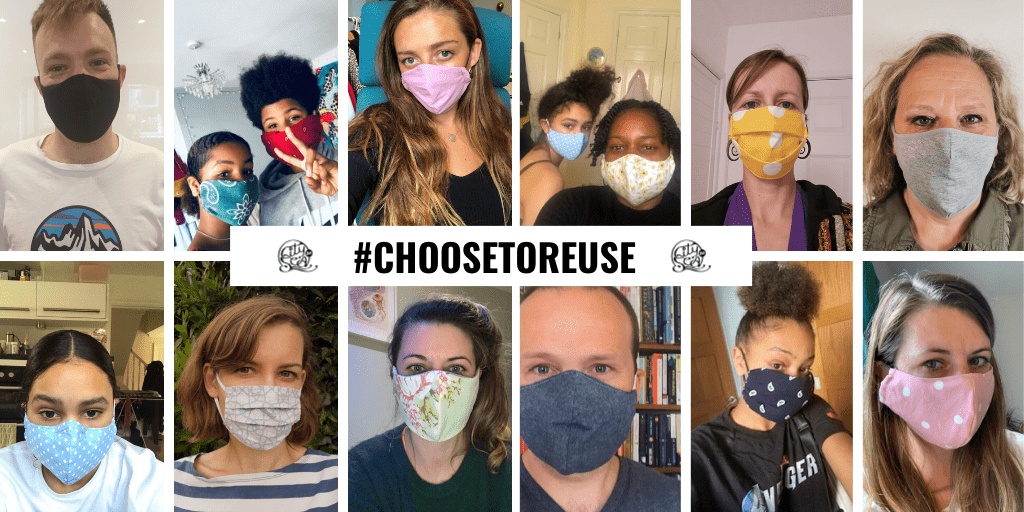
GET THE LATEST FROM OUR BLOG
Plastic-Free July 2025
Plastic-Free JulyHow to get involved with Plastic-Free JulyWelcome to Plastic Free July! Although we’re slightly late to the party, we’re really excited to be participating for another year in this amazing global initiative. Started in 2011 by Plastic Free Foundation,...
Introducing Refill Return
Introducing Refill ReturnA new chapter to power the new reuse economyAt Refill, we’ve always believed in tackling waste at its source. As long-time behaviour change experts and passionate advocates for upstream solutions to the single-use crisis, we’re driven by a...
Chew Plants Not Plastic
Chew Plants Not PlasticA Call to Ban Plastic-Based Chewing GumDid you know most chewing gum contains plastic? Yes, that piece of gum in your mouth is actually made from the same plastics found in carrier bags, shampoo bottles, and even car tyres. And we brits chew a...
Taking the Reuse Manifesto to Parliament
Taking the Reuse manifesto to parliamentWhat is the City to Sea team doing at Westminster…again? City to Sea, CEO Jane Martin explains how we took our Reuse Manifesto to the Houses of Paliament.One of the great things about stepping up as CEO of mighty campaigning...
Making Waves Against Plastic Pollution with Georganics this Green Friday
Making waves against plastic pollution with Georganics this Green FridayMeet our partners leading the transition from single-use to reuse - The plastic problemPlastic pollution is one of today’s biggest environmental challenges, with more single-use plastic being...
Calling for Policy Change
Calling for policy changewhat we’ve been up to in 2024Read about our work calling for legislative change to take action on plastic pollution! At City to Sea, we have a history of calling for policy change through our campaigns and advocacy work – with record...


